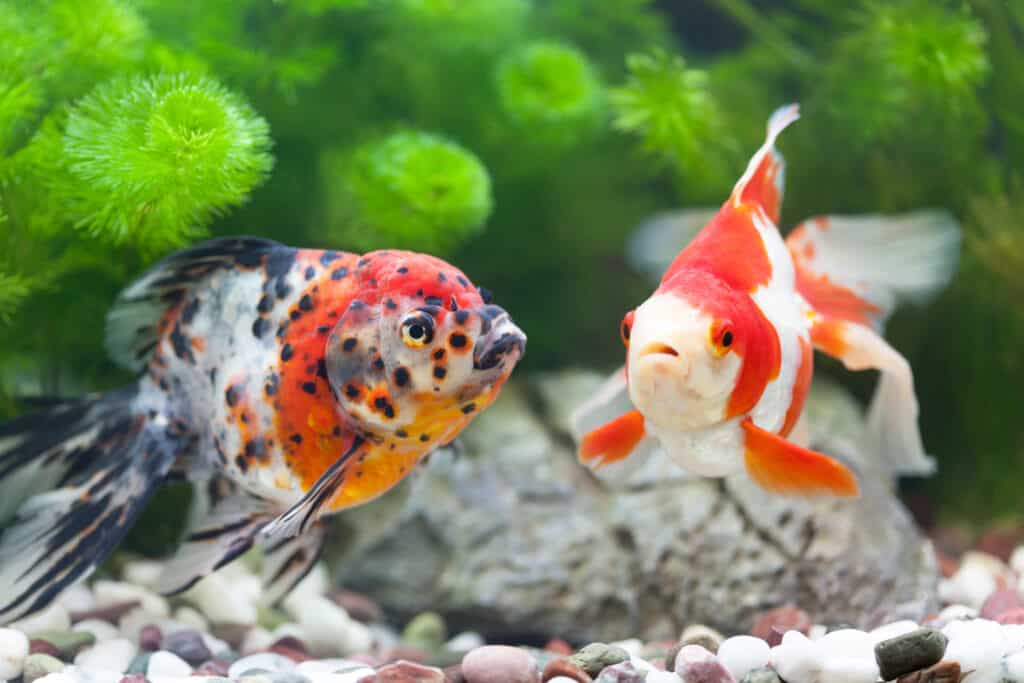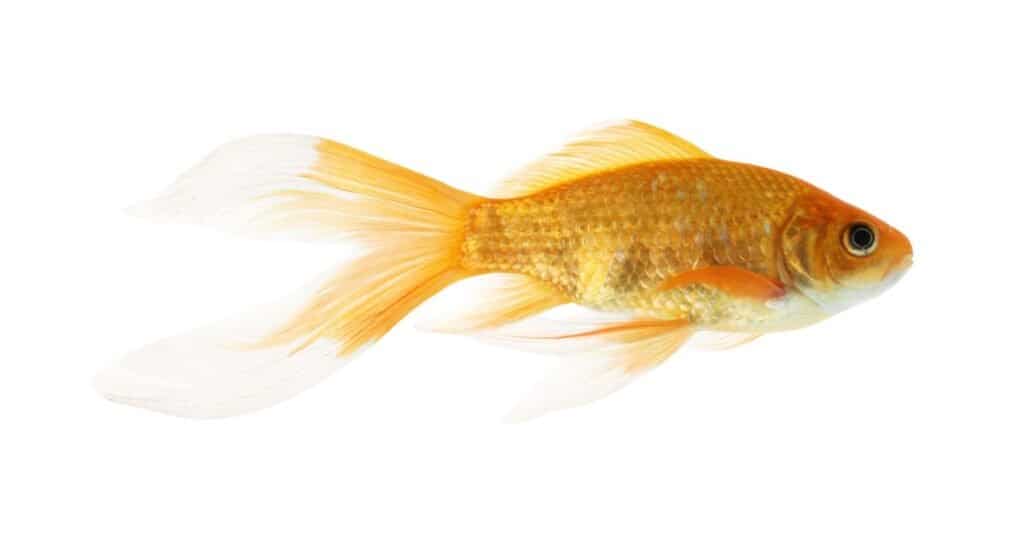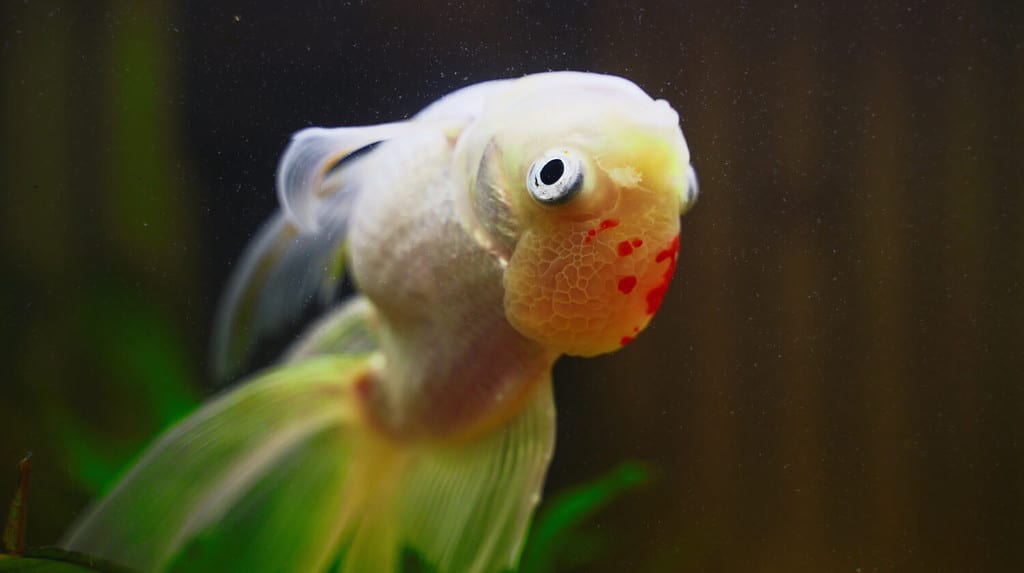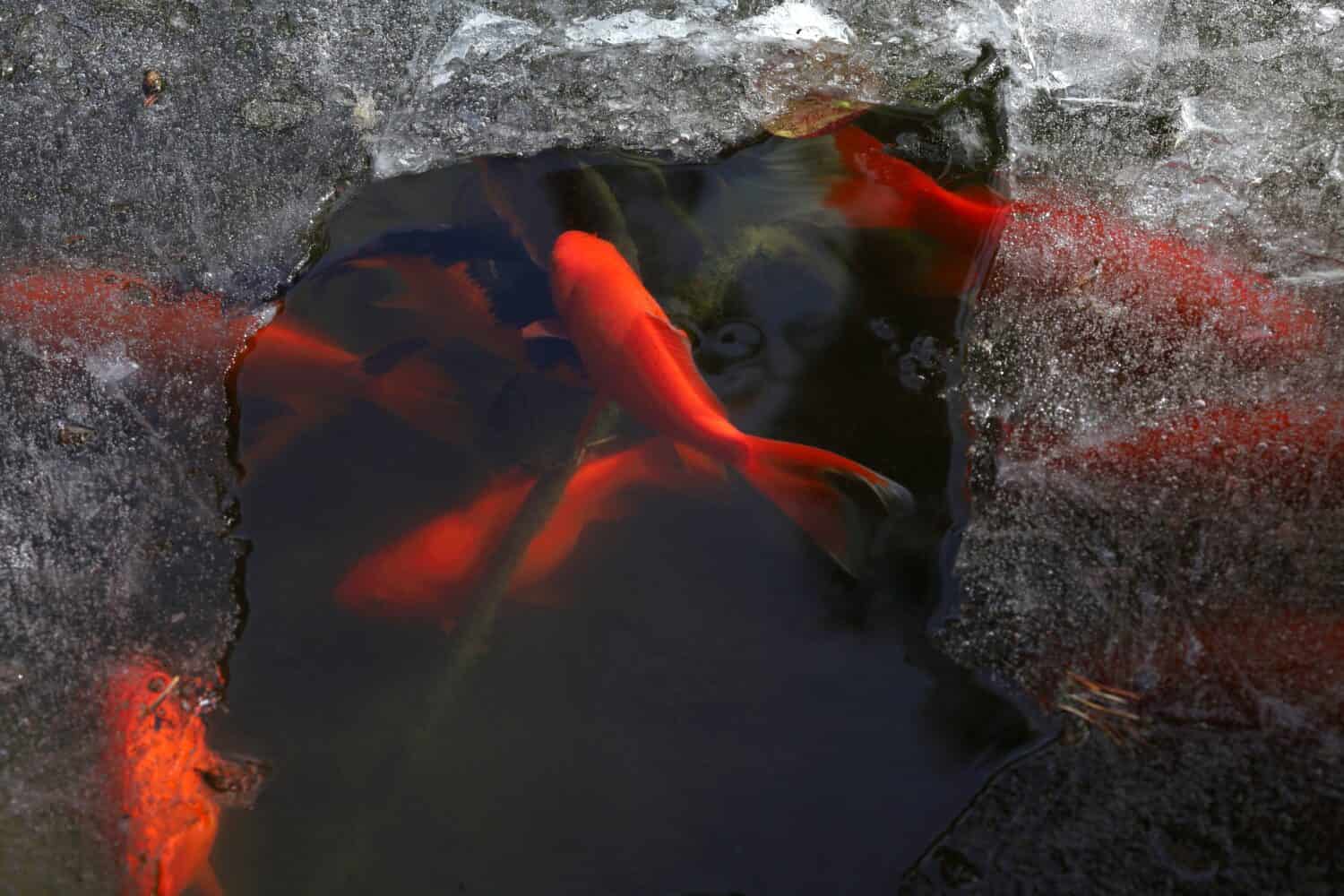
Goldfish can survive in cold water conditions but prefer temperate water temperatures.
©Sad Agus/Shutterstock.com
Goldfish have been kept as ornamental pets for centuries, with ancient origins dating back to ancient China during the Ming dynasty. They are one of the most popular aquarium fish in the world. These hardy and adaptable fish are known for tolerating a wide range of aquarium conditions. Some varieties of goldfish are hardy enough to adapt to life outdoors, where they make lovely additions to ponds and water gardens.
However, how cold can goldfish survive, and what is their ideal temperature range? This article will tell you everything you need to know.
Understanding Goldfish Water Temperatures
Goldfish are often described as temperate or cold-water fish, both of which are true. They can survive in both cold and warm water conditions and do not need a heater like tropical fish.
Poikilothermic
Goldfish are poikilothermic or cold-blooded animals. They are unable to control their body temperature which changes with their environment.
Ideal Temperature Range
Most goldfish can survive at extreme water temperatures that would kill other aquarium fish. Their extensive temperature range is one of the main reasons they are so popular in aquariums. Although goldfish can survive at some incredibly high and low temperatures, they still have an ideal temperature range at which they function best. Their ideal temperature range is between 65° to 74° Fahrenheit (18° to 23° Celsius).
Metabolic Functions
A goldfish’s metabolism affects its activity levels, eating habits, waste production, growth, and respiration. The water temperature influences some of the basic bodily functions of fish. A goldfish’s metabolism typically functions normally at 70° to 80° Fahrenheit (20° to 30° Celsius), especially for their movement.

Some of the first signs your goldfish could be slowing down because of cold temperatures is changes in their appetite and activity levels.
©yoshi0511/Shutterstock.com
A goldfish’s metabolism will slow down in cold or freezing water conditions, reducing their appetite and energy levels. Furthermore, their digestive system slows down and doesn’t break down food like it’s supposed to. This is why many goldfish will stop eating and move less when temperatures drop below their ideal range.
As the temperature gradually warms back up, their metabolism will speed up again. The warmer the water is, the hungrier and more active a goldfish might be. However, a goldfish is not able to breathe properly in very warm water which naturally holds less dissolved oxygen. This can cause gasping behaviors at the surface of the water, usually a clear sign that they are not receiving enough oxygen.
Can Goldfish Survive in Cold Water?
Goldfish can survive in cold water temperatures as low as 50 degrees Fahrenheit (10°C) before their metabolism slows down significantly. Streamlined goldfish seem to be the most tolerant to colder water temperatures than fancy goldfish, hence why they are preferred for ponds.

The common goldfish is one of the hardiest streamlined goldfish varieties available.
©iStock.com/Liudmila Chernetska
You see, there are different types of goldfish — fancy, streamlined, and single-tailed. The streamlined goldfish include the popular common or comet goldfish. These varieties of goldfish closely resemble their carp ancestors and display some of the hardiness commonly seen in wild carp.
Fancy goldfish such as Orandas have been selectively bred with body modifications that impact their movement, hardiness, and bouency. Most fancy goldfish are more sensitive to changes in water temperature and show the most discomfort when the temperature falls outside their ideal range. They usually slow down and eat less when the temperature drops below 58 degrees Fahrenheit (14.5°C), whereas streamlined goldfish might only slow down at 50 degrees Fahrenheit.
What Is the Coldest Temperature Goldfish Can Survive in?
Goldfish have been known to survive in very cold conditions, including temperatures below freezing point. The coldest temperature certain goldfish can survive in is 25 degrees Fahrenheit (-4°C), but only for a short time. However, this is not true for each and every goldfish.
Small and vulnerable goldfish with weak immune systems from disease or improper care are unlikely to survive for more than a few hours in freezing conditions. Large and healthy streamlined goldfish are more likely to tolerate the freezing conditions for longer, usually a few days.

Goldfish may die if they are exposed to freezing water temperatures because their bodies no longer function properly.
©M-Production/Shutterstock.com
Freezing water temperature is not good for goldfish and affects their health. Goldfish may be more susceptible to diseases, starvation, and poor growth when they are kept in freezing conditions. It is best to keep your goldfish in water temperatures within their ideal range for their overall health and longevity. Freezing water temperatures have few benefits for goldfish and can take a toll on their health and immunity over time.
Plus, there is no guarantee that goldfish are going to survive in freezing temperatures. Most goldfish will show signs of stress and decreased metabolic functions in temperatures around 50 degrees Fahrenheit. They may not live for much longer the colder the water temperature becomes.
Do Goldfish Stop Eating When They Are Cold?
Goldfish will slow down many metabolic functions to survive in the cold temperatures, including their appetite. They may not digest their food properly in freezing temperatures and, therefore, stop eating. When the temperature drops below 50 degrees Fahrenheit, it is best to stop feeding them until the temperatures warm up again. Any uneaten food in the aquarium will start to foul the water, causing poor water quality issues that can kill your goldfish quicker than cold temperatures will.
Can Goldfish Survive in Frozen Ponds?
Aside from koi, goldfish are often a top choice for both indoor and outdoor ponds because they can survive at various temperatures. They can handle the temperature changes throughout the day and night, or the lower or higher temperatures as the seasons change. When goldfish are kept in ponds, the water temperature is usually influenced by the ambient temperature.
During the colder months, a goldfish’s pond may become colder than usual or freeze over. While some goldfish can handle the colder water, other goldfish may struggle to survive. Regardless, you will notice that your goldfish start to slow down and eat less.

Pond goldfish may survive freezing temperatures at 25 degrees Fahrenheit by slowing down their metabolism.
©RaspberryArt/Shutterstock.com
As the temperature starts falling below 50 degrees Fahrenheit, most pond goldfish will refuse food entirely. They will produce much less water and remain still in the water. This is an indication that their metabolism is slowing down, and they are entering a state of dormancy or inactivity. This dormant state allows them to survive in the cold temperatures and save their energy for survival.
This is when most fish keepers will bring their goldfish inside unless the pond is maintained for overwintering. However, overwintering goldfish outdoors can be challenging, and the safest option is to bring them indoors where it is warmer. You can set up a large tank or indoor pool where your goldfish can stay until the temperatures are favorable again.
Do Goldfish Need a Heater?
Goldfish generally do not need a heater in their aquarium or pond unless the temperatures are constantly dropping below 58 degrees Fahrenheit. They are comfortable at room temperature and can handle gradual temperature fluctuations throughout the day.
Certain fancy goldfish who show signs of stress in cold water can benefit from a heater in the aquarium. Heaters can help keep the water temperature stable and warm. The heater should only be set to 65° to 74° Fahrenheit because goldfish do not need to be kept in tropical conditions. It is advisable to monitor your goldfish’s water temperature using a thermometer.
The thermometer should be left in the aquarium at all times and regularly checked. This allows you to spot any heater malfunctions or sudden changes in temperature that could be stressful to goldfish.
In Summary
Goldfish are hardy aquarium fish that can survive in various water temperatures. Most goldfish are comfortable between 65° to 74° Fahrenheit but can survive in temperatures below 50 degrees Fahrenheit. Some pond goldfish have been known to survive in freezing temperatures till 25 degrees Fahrenheit. However, they will be sluggish and lose their appetite. Goldfish can become stressed if they are exposed to prolonged cold-water temperatures, leading to illness or death. Keeping them in temperatures within their ideal range is going to be the best for their growth, health, and appetite.
The photo featured at the top of this post is © hidesy/Shutterstock.com
Thank you for reading! Have some feedback for us? Contact the AZ Animals editorial team.







